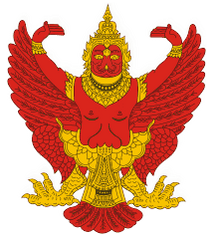
Healing Through Yantra - English book on Yantras
- Worldwide Delivery
- In stock, ready to ship
- Inventory on the way

The following shipping policy is valid for all retail orders placed on our site www.Devshoppe.com . By making a payment for one or more items on our site, you are providing an agreement to our shipping policy.
-
Please note that the term "FREE SHIPPING" (if any) applies to "non-priority" shipments for which the customer does not pay any additional charges over and above what is listed as the price of the items (after adjustments for any discounts and credits) in the order being placed. However, since we, as suppliers, need to bear charges for shipping and handling of the items we send to our customers, we reserve certain rights in cases involving refunds, regarding the refund of these charges, in certain cases, as outlined below and in our Returns Policy.
-
It takes between 7 to 10 days for shipping from India to anywhere across the world. The customer will be informed about the approximate time of delivery after placement of her/his order. However in rare cases of further unavoidable delays, the customer will be duly informed of the new expected delivery date for her/his order.The Divine products like Yantras,Rudrakshas needs energisation to give maximum benefits and as energisation is a time consuming process , orders of Yantras and Rudraksha beads may take around 10 - 15 days to get delivered from the day of orders.
-
We do not guarantee any time limit of delivery. In rare cases, delays might occur due to customs clearance delays, flight delays or other uncontrollable circumstances. However we always try our level best to ensure delivery within the number of days to delivery as informed in our post-order communication to the customer. In case the ordered item(s) do(es) not reach the customer within 6 weeks* of our having shipped the same from India, we will offer a full refund, provided any tracking information does not show that delivery was attempted at the customer doorstep. However, in case of packages for which we are unable to find tracking information for the package, we will assume on good faith that the package delivery was not attempted and we will refund the entire amount after 6 weeks from our shipping date.
Note: If after a refund is issued, a delivery attempt is made, the customer may choose to refuse to accept delivery of the package. If the delivery is accepted, the original ordering amount again becomes payable and suitable information on how to make the payment will be sent by email. -
In case the package is returned to us after attempted delivery or because of a wrong shipping address provided by the customer at the time of placing order, we will be able to offer a partial refund after deduction of the charges we had to bear to have the item(s) packaged and shipped.
-
Customs charges, if any will have to be borne by the customer. However, by experience, we find that customs charges are very rarely applicable on our packages.
-
The choice of the consignment carrier is made at the sole discretion of Devshoppe. Normally we use reputed courier services like DHL , TNT , FEDEX , UPS , ARAMEX , REGISTERED POST and SPEEDPOST for international deliveries and BLUEDART, DELHIVERY, ECOM EXPRESS, XPRESS BEES , DTDC , REGISTERED POST and SPEED POST for deliveries within India.
-
The above conditions will not be applicable in case we inform the customer beforehand about the higher possibility of damages or misplacement of a package to be sent, in cases of recipient countries embroiled in internal disturbances like war, strife or riots. If the customer still asks us to ship the package, we will not be liable for any damages to or loss of the package and no refunds will be due.
-
In case of internal disturbances in the recipient country (war, strife, riots etc), we reserve the right to cancel an order and refund the money if we feel that a package cannot be delivered safely.
-
Please note that Devshoppe India is not liable for any shipping delays, or loss of any kind resulting from unforeseen and uncontrollable circumstances, such as: recipient was unavailable or un-contactable; incorrectly addressed orders; weather conditions and so on. We will try our best to notify customers of the delay and estimated delivery date in such situations. Providing us correct address is customer's responsibility , we are not liable for any losses that occur due to delivery at incorrect address that customer has provided us.
Incase any explanation is required on any of points mentioned above , you can reach us by sending a mail to devshoppe@gmail.com








